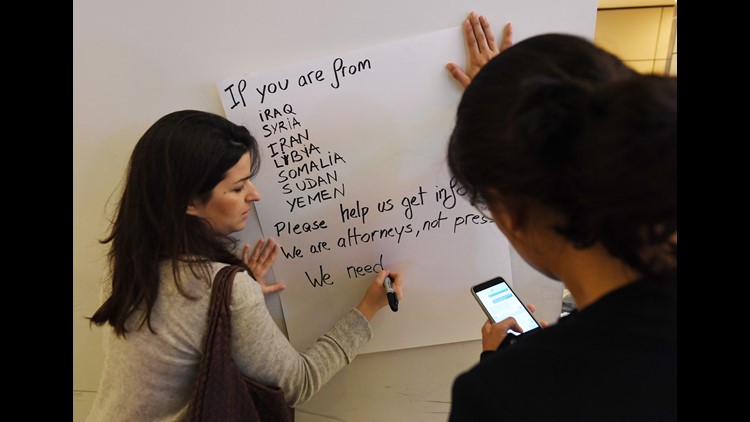It should go without saying, but being a refugee isn’t easy. Neither is getting into the United States.
Just gaining refugee status is a hard process, and most of the millions who seek it do not get it.
And only a tiny fraction end up resettled in the United States.
The United Nations defines refugees as people forced to flee their home country to escape persecution, war or violence. Most people seeking refugee status must first register with the UN, which decides if they qualify.
The United States has historically resettled more refugees than any other country, but the executive order President Donald Trump signed Friday suspended refugee admissions for 120 days. The UN Refugee Agency said Monday more than 800 refugees were supposed to arrive in the US this week, but are now barred. The agency estimated as many as 20,000 might have resettled in the US during the 120-day suspension, based on previous data.
The Syrian refugee program was suspended indefinitely. Trump’s order also lowered from 110,000 to 50,000 the number of refugees that will be allowed into the US this year. This, and the changes to other immigration policies announced in the order, have sparked days of nationwide protest.
Process includes FBI, Homeland Security
Refugees face a more rigorous process than any other type of traveler coming into the US. The process takes an average of 18 to 24 months, and most of it is conducted outside the US.
• The vetting process involves eight federal agencies, including the FBI and Department of Homeland Security; six security databases; five background checks; and three in-person interviews.
• Their fingerprints are collected and screened against the FBI, DHS and Department of Defense databases.
• They go through a “cultural orientation” class and medical check.
• If allowed to come to the US, refugees face another screening before embarking, and another security check at a US airport.
US took 85,000 refugees last year
The UN estimates there are 21.3 million refugees in the world.
Less than 1%, mostly those at highest risk, eventually resettle in a third country — that is, not their home country and not the one to which they fled. Of those, the US takes almost two-thirds.
Turkey hosts the most refugees, 2.8 million.
Since 1975, the US has settled more than 3.3 million refugees fleeing war and persecution. Last year, the US took in 84,994 refugees, most of them women and children. Almost 39,000 were Muslims, the Pew Research Center said, citing data from the State Department’s Refugee Processing Center. About 14% of the refugees admitted to the US last year were Syrians, who face additional scrutiny and vetting.
The US has denied more than 500 Syrian refugee applicants since 2011 because of known or suspected terrorism ties, according the chairman of the House Homeland Security Committee.
Refugees halted after 9/11
Refugees make up about 10% of the roughly 1 million immigrants who gain lawful permanent residency in the US each year, says the Pew Research Center. About six in 10 are Christian, and one in 10 Muslim.
After the September 11, 2001 terrorist attacks, the US stopped most refugee resettlement for about three months to look into security issues.
In previous decades, polls have often shown most Americans object to welcoming refugees, the Pew Research Center reports. For instance, 71% in 1980 opposed Cuban refugees.



